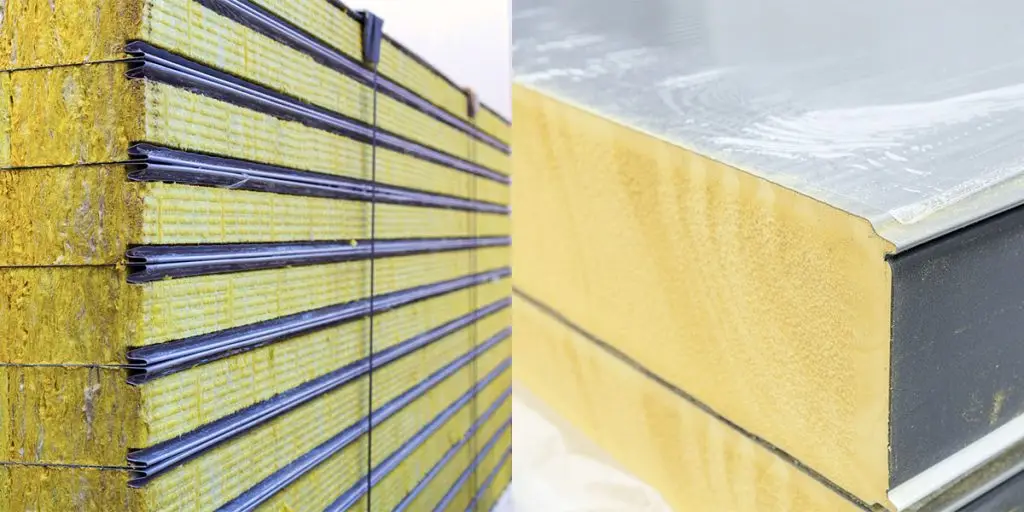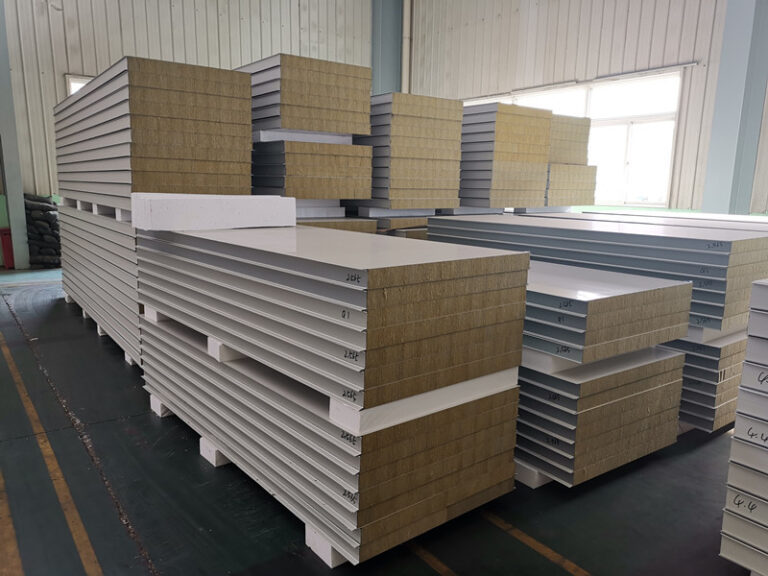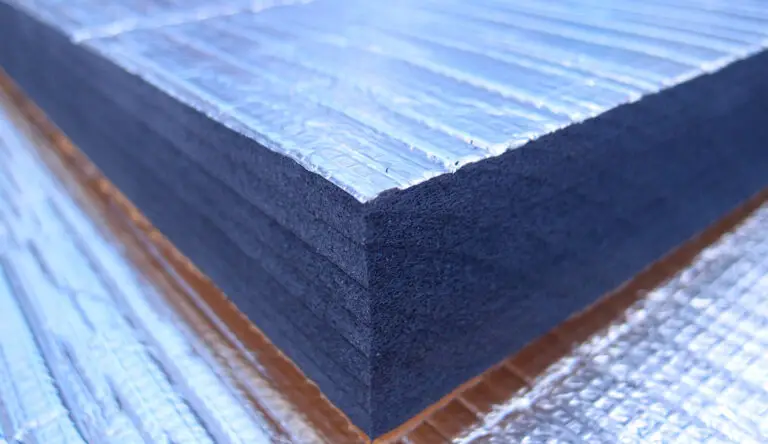DIFFERENCES BETWEEN PUR & ROCKWOOL INSULATED PANELS
You’ll learn everything you need to know about the differences between PUR and Rockwool insulated metal panels in this blog post. First, we’ll go through the differences in the panel’s insulating core. Second, we’ll delve deeper into the technicalities and discuss the differences between PUR and Rockwool sandwich panels in greater depth.
INSULATING CORE OF INSULATED METAL PANEL
The difference between polyurethane and a rock wool insulated panel is in the insulating core of the panel. Rigid polyurethane foam is the insulating core of a polyurethane panel (PUR or PU). During the manufacturing process, it is poured between the two metal supports. When this foam comes into contact with air, it solidifies and fuses the two plates together, resulting in a monolithic product with excellent insulating properties. Rigid polyurethane (PUR) insulation is very effective, lightweight, and can attach to a wide range of materials. It has a wide range of goods due to its low heat conductivity and high strength-to-weight ratio, as well as its production adaptability. As a result, PUR insulation products are the obvious choice for the majority of construction insulation projects. The insulating core of a Rockwool panel is rock wool, also called mineral wool. The Rock Wool is glued between the two sheets and forms a monolithic product. Mineral wool is a fibrous substance made from spinning or pulling molten mineral or rock materials like slag and ceramics. Thermal insulation (as structural and pipe insulation, albeit not as fire-resistant as high-temperature insulation wool), filtration, soundproofing, and hydroponic growth media are all applications of mineral wool.
WHAT ARE THE DIFFERENCES BETWEEN THESE TWO TYPES OF INSULATED PANELS:
Insulation Value;
Fire Behaviour;
Sound isolation;
The manipulation and installation in place
Value of Insulation
Polyurethane has a greater insulating value than rock wool. What does this imply? This means that the polyurethane isolates more at the same insulation thickness. Then, like an 80 mm thick rock wool panel, a 50 mm thick polyurethane panel insulates.
“A 50 mm thick polyurethane panel insulates like an 80 mm thick rock wool panel”
Fire Behaviour
Polyurethane is an organic substance that tends to fuel the flames to a lesser or larger amount. Because rock wool is made up of inorganic components, it does not contribute to the propagation of flames. What exactly does this imply? This indicates that when a product with a fire resistance of an hour, two hours, or three hours is required, rock wool must be used.
“Rock Wool does not contribute to the spread of the flames”
Sound Insulation
Because the rock wool fibers break the acoustic waves and diminish their intensity, the main advantage of a Rock wool panel is that it contributes significantly to noise reduction.
Last but not least, manipulation and installation.
The main differences are due to the fact that rock wool is heavier than polyurethane, which makes handling and installation of the panels more difficult and requires more skill.
CONTACT US
To learn more about the difference between polyurethane and a rock wool insulated panel. You can get in touch on 08168376402 or complete the form below. You can also contact us via info@langeandgrant. Once you reach out to us, we can provide you with a quote and can also discuss our products and services further.



